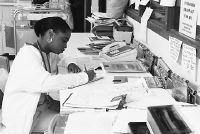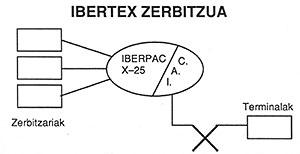EUSKADI IRRATIA: ESAN and IZAN
1996/06/01 Kaltzada, Pili - Elhuyar Zientziaren Komunikazioa Iturria: Elhuyar aldizkaria
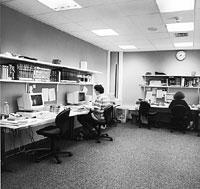
Julián Beloki, director of Euskadi Irratia, opened the new doors of the radio. The auditoriums, the studios, the fonoteca, the windows that open to one of the most beautiful places in San Sebastian... all of them. The central theme was the new face of Euskadi Irratia, the new technology that correctly collects, processes and channels the words broadcast on the radio.
The computerization system used by Euskadi Irratia is unique in our environment. It is designed specifically, since after the visit to the management systems of different stations, the entire computer system has adapted to the needs of the station. It is the first broadcaster that has been fully integrated: recording, editing, archiving or broadcasting itself, and Euskadi Irratia has integrated everything into a single system. And of course, being user oriented, all the messages on the screens appear in Basque. Many of us have radically changed the image we could have of the radio: there are no longer tapes and the radio studio works with the mouse.
PCAudio, heart of the new radio

The philosophy of the system named PCAudio is basically simple and known: the computer data management system. However, the data managed by the network correspond to the audio, that is, the musician or the word. This conditions the design of the network and defines its two main characteristics: on the one hand, the operation of the network must be extremely fast, without dysfunctions; it must run as soon as it receives the order, since it interprets the shortest time as hollow in the audio; and on the other hand, it must have a large memory capacity, since the audio data requires a large space. The information network of Euskadi Irratia works with an Internet model that allows to store at this time 100 hours (27 seconds cover a Mega).
All radio functions have been integrated into the new system, which is, as we know, the first digitized radio in the entire Spanish state.
The main control point regulates the operation of the whole house. The central computer, the heart of the radio, is in charge of managing the 12 terminals on the radio. As a security measure, the central computer is duplicated: there is a second computer with the same features and functions and if the first one fails, it will be activated automatically. In the control center is also a new recording system that collects with great quality everything that the radio expels: records and permanently stores all the broadcast. In order not to saturate your memory, the recording system requires a daily maintenance service: radio partners should get used to releasing unnecessary information or saving it to another support.
The relationship between the central computer and the 12 terminals takes care of the Novell 4.1 application. The most important advantage of the system has been access to information: all information is on the network, but you can listen, record, edit and/or broadcast from each terminal. To do this, the audio data is executed through the program called GDS.
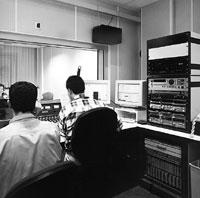
It facilitates the rapid manipulation of information and the same function as the old magnetophones; in addition to preventing experienced radio professionals from becoming frightened, messages appearing on the computer look the same as magnetophons: buttons, ribbons and even a keyboard that looks like magnetophon. Depending on the function assigned to each control station, simple playback and recording or playback can be performed. The information plates placed in the terminal have been placed according to the use that is going to be given to the control and from there has been a way to advance some savings.
The computerization of Euskadi Irratia has radically modified the recording and archiving systems. On the radio archival works usually eat many hours, since the conservation time is the same as the information to be archived in the traditional system. All these hours have been left blank by the new system, as dragging the mouse will copy the data from one file to another, so it often takes a few seconds. In addition, it offers multiple possibilities of organizing the file, since the digitized information should not be transported by hand, but through the network. In addition to accelerating all this, it has brought to the studies of Miramón a more logical labor organization. Although the listener does not realize, it is now easier to work.
Looking ahead
It was a visit to surprise any radio lover. It is still early to predict the problems that the system can generate, but Julian Beloki told us about computer servitude when we asked him about it. But potentiality is the future dimension of the new system: optional radio, automation, better use of technical resources or training of personal resources. They told us that all of these options are there and so on.
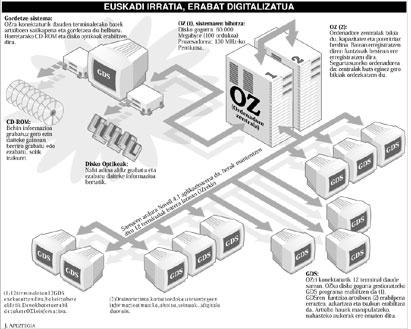
"The key to the radio of the future lies in the definition"
Julián Beloki has been director of Euskadi Irratia since 1991. Therefore, he knows perfectly the evolution of radio in recent years. The day we went to visit the radio, we had the opportunity to talk a lot about the possibilities of the future and the topics of the new radio.
Zetiaz-Elhuyar: How will the computerization of Euskadi Irratia affect programming?
Julián Beloki: The coming changes are difficult to foresee. If we look at potentiality, we can say that we are able to make a future radius. First we have to know the media well, what we can really do. And it is that we are teachers and our students, right now we are using a completely new radio model and we do not know how far it can take us.
N-D: Will the radio listener notice the system change?
J. Beloki: Maybe not yet. From our experience with the radio, we immediately realize that the music used to set sounds quite bad or there are mismatches between voice and music. However, the normal listener does not realize and should not realize. I think the changes will be detected in the new products that we will generate when renewing programming and using computer media. All this for the moment without realizing.
N-D: When did the process of implementing the new radio model begin?
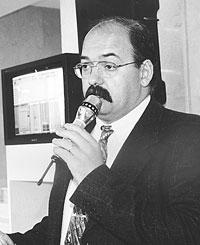
J. Beloki: A year ago, specifically in June last year. Faced with the need to change headquarters, we thought it was time to shake the philosophy of the radio and we went in search of the new system. We visited several radio stations, visited companies with different technical possibilities… and gradually began to know better the systems adapted to the radio. We immediately saw that the external models made the most of what we wanted to do and we could not use them here as such. We needed a model created specifically for Euskadi Irratia, and that has emerged by making a selection of the things we have seen. In the short term this exhausted us a lot, because everything was in our hands, but in the medium term it has been good. We have designed the new radio and we know better than anyone all its secrets. In addition, we have selected different materials, we have supplied the materials according to the previous design and thanks to this we have managed to make a radio to measure.
N-D: The radio team has also had to adapt to the new system...
J. Beloki: Yes, and it can be said that we have suffered everything that could be suffered. You cannot turn off the radio because the work team is taking the training courses, which have had to be done without missing our daily pace of work. I learned how the system works at the user level and then explained it in groups to all my colleagues. The first sessions were held at the former headquarters, but the experimental phase ended overnight: As soon as Miramón comes, the magnetophons and the ribbons will end!
N-D: How will the radio of the future be?
J. Beloki: Right now, many radio stations are in deep crisis. The lack of a fixed radio model accentuates the radio crisis, as it is very difficult to compete with mainstream media. As long as this definition is not addressed, it is difficult to see clearly the future of radio. In any case, the new model of Euskadi Irratia offers us many possibilities for the future. We can make an optional radio with new information services supported by technological means. For example, we can offer listeners access to weather information via a phone number or create new classification and transmission paths. At the moment we cannot dare to take this step, as we are immersed in the learning process. But it can be done and I think the time of radio will come according to the menu.

Gai honi buruzko eduki gehiago
Elhuyarrek garatutako teknologia



